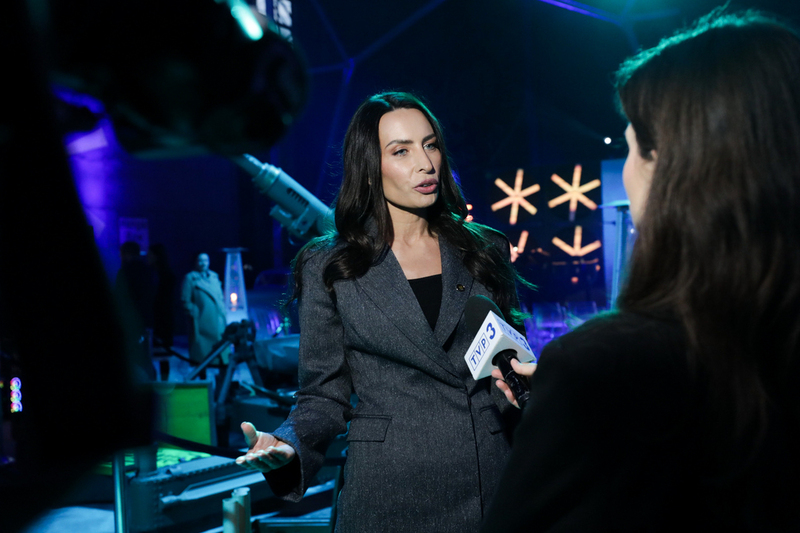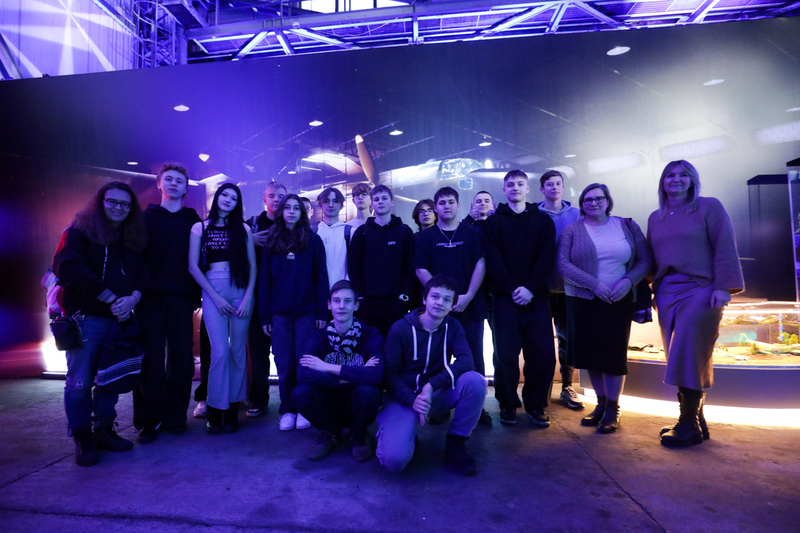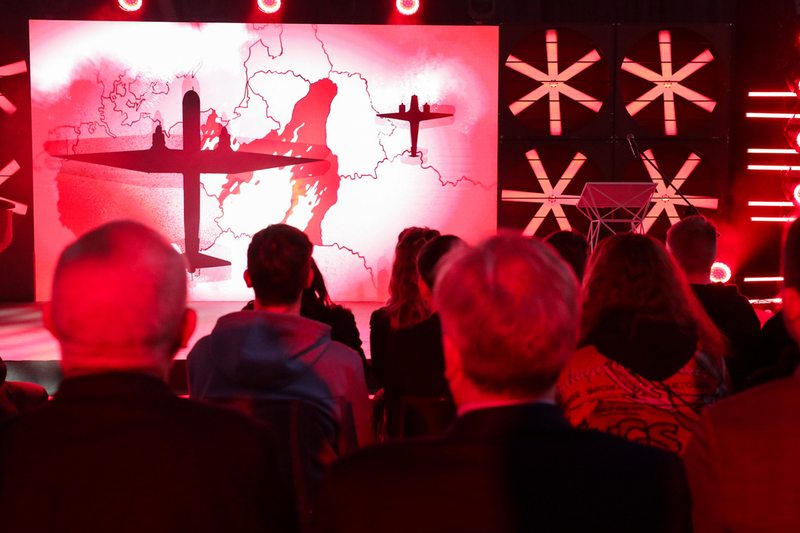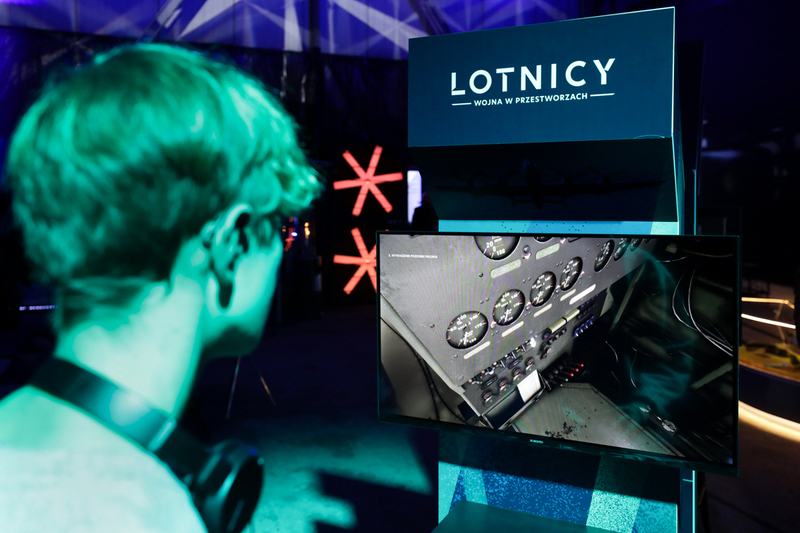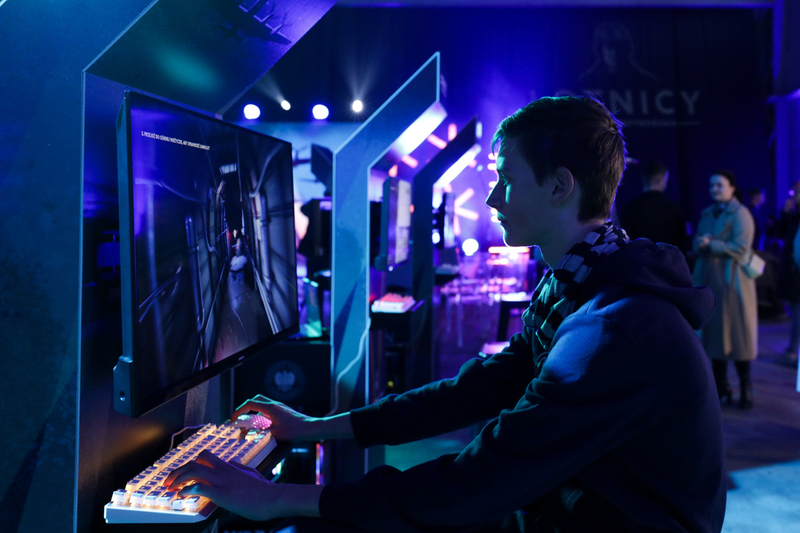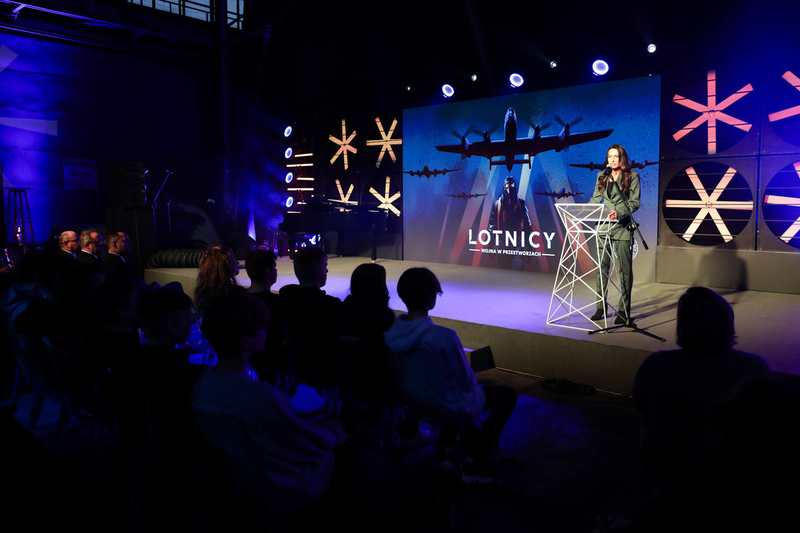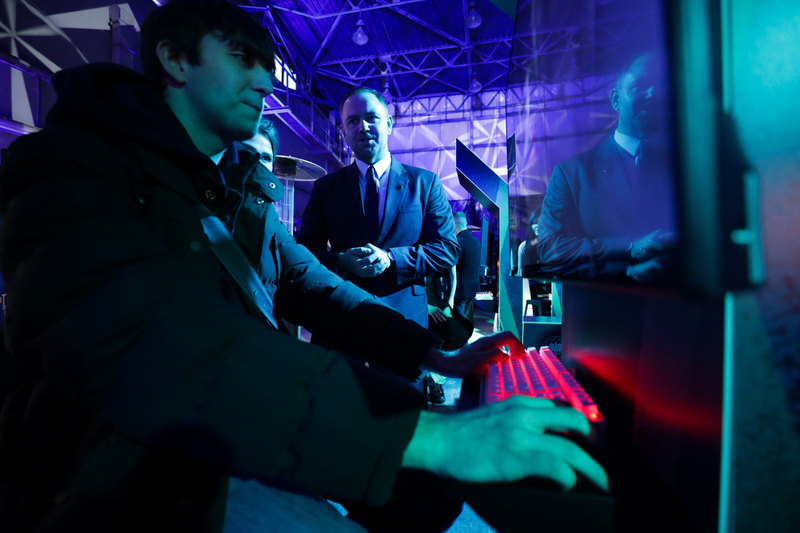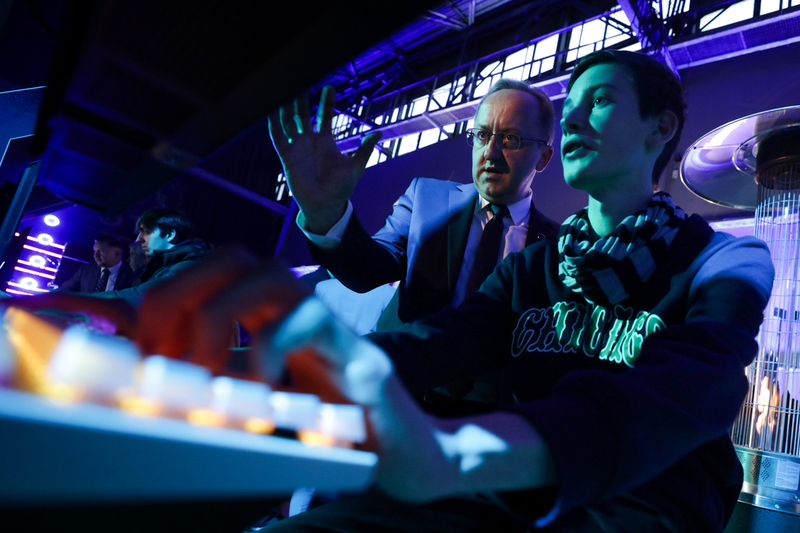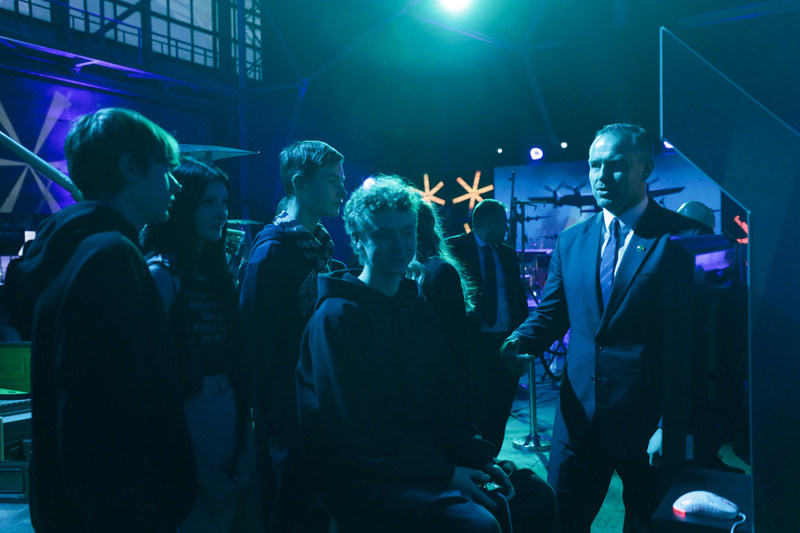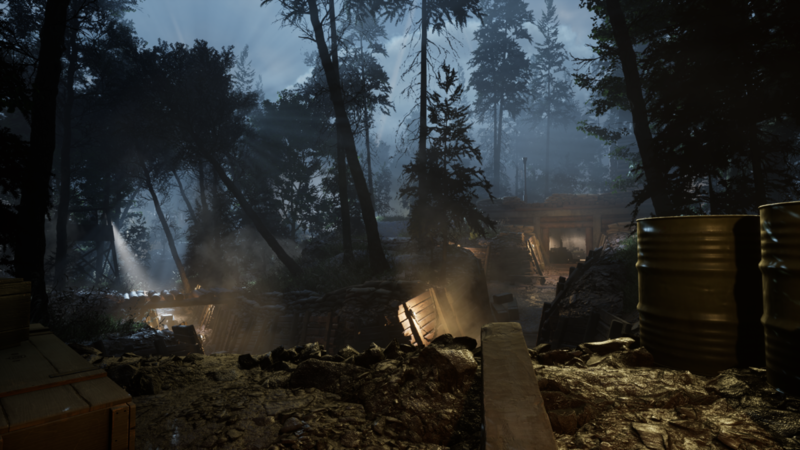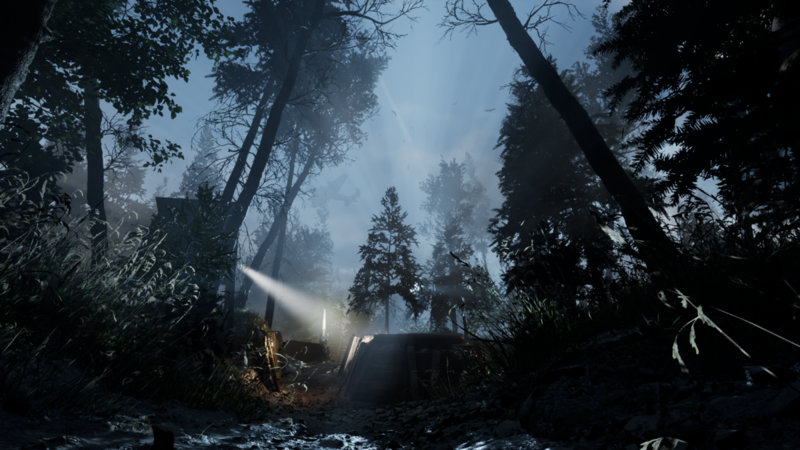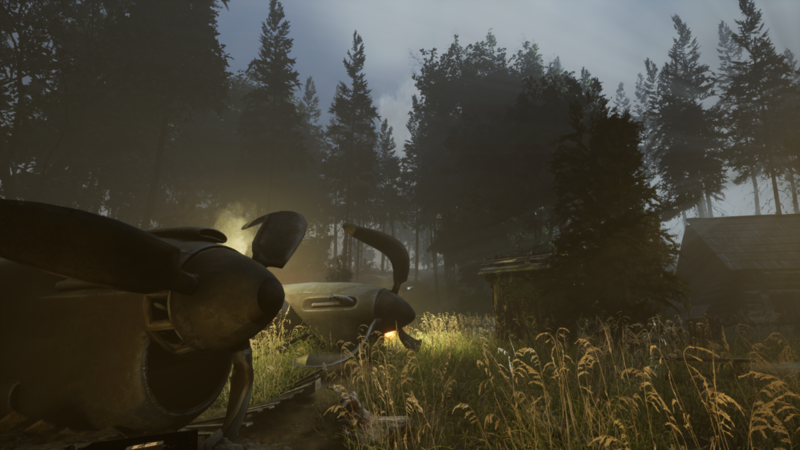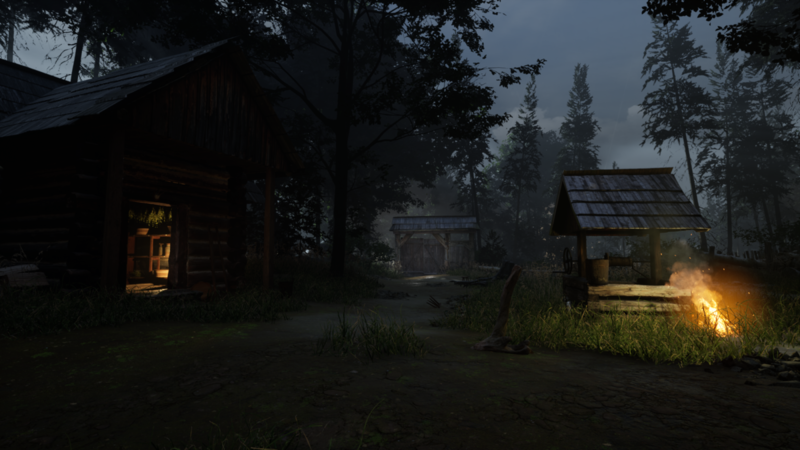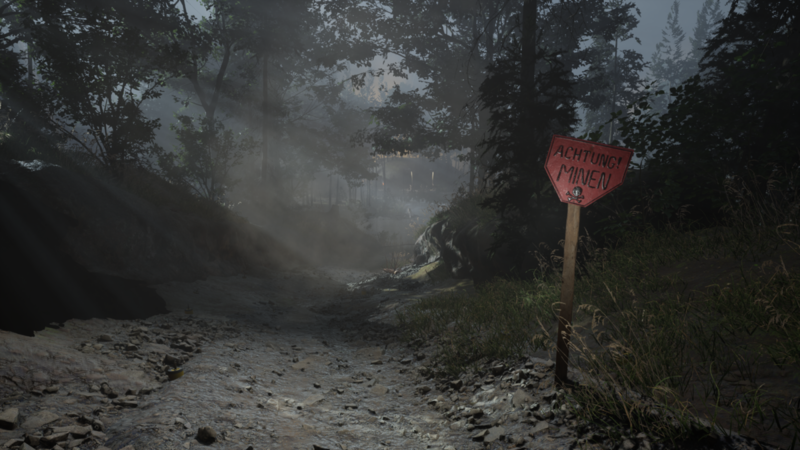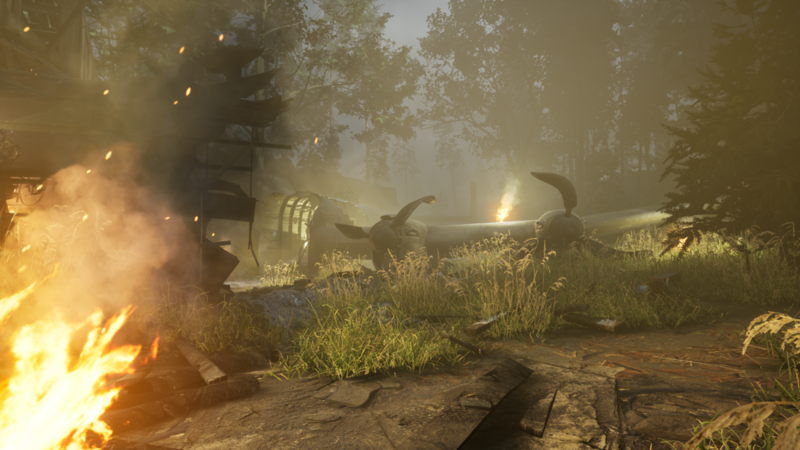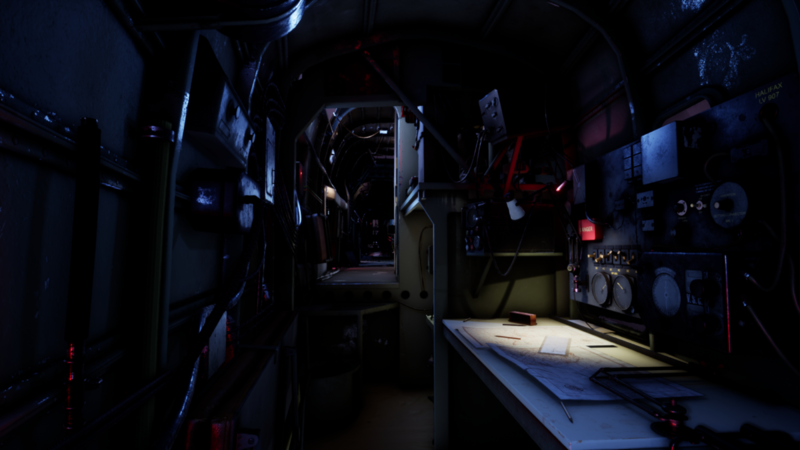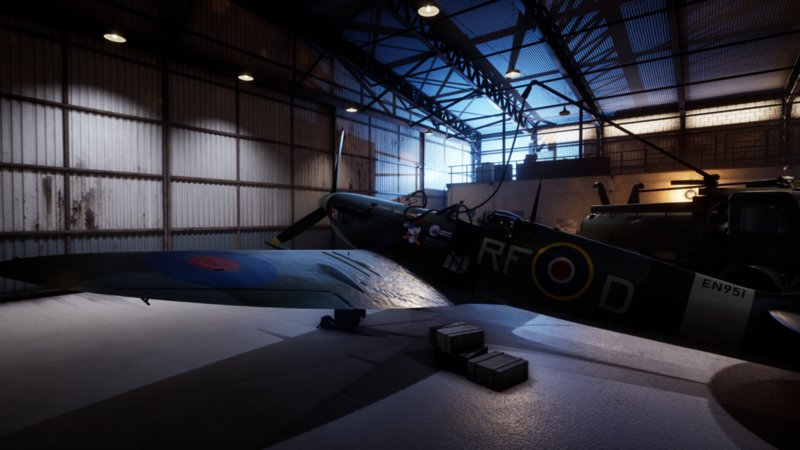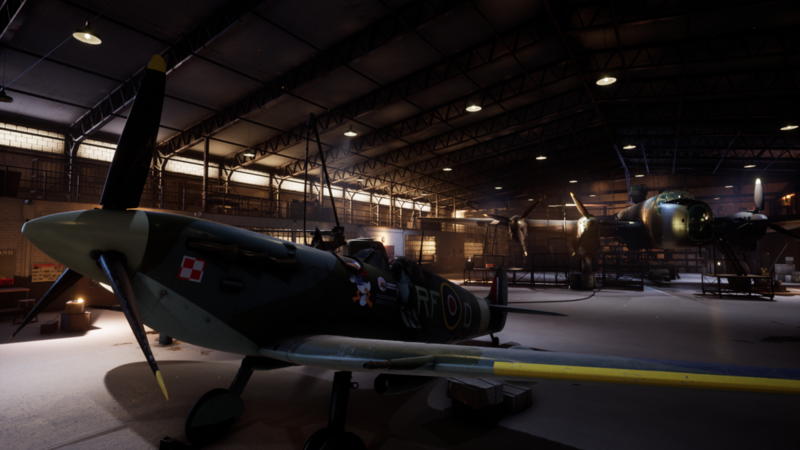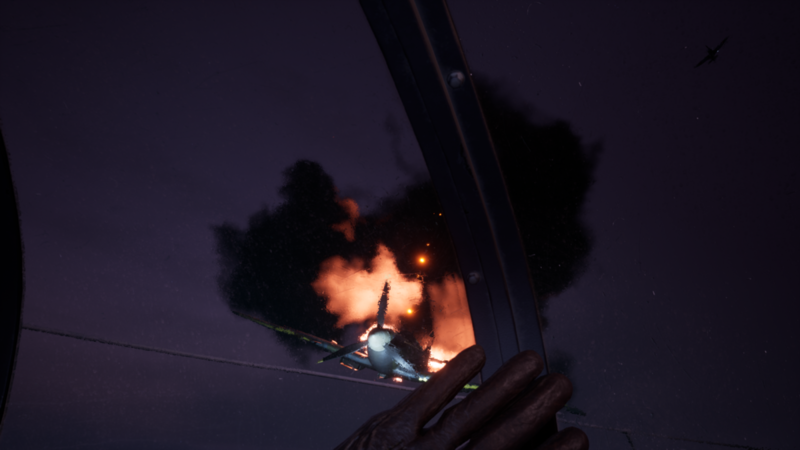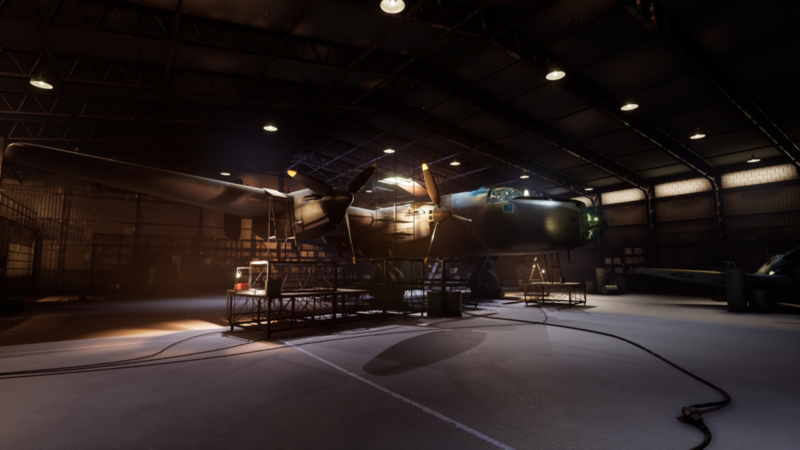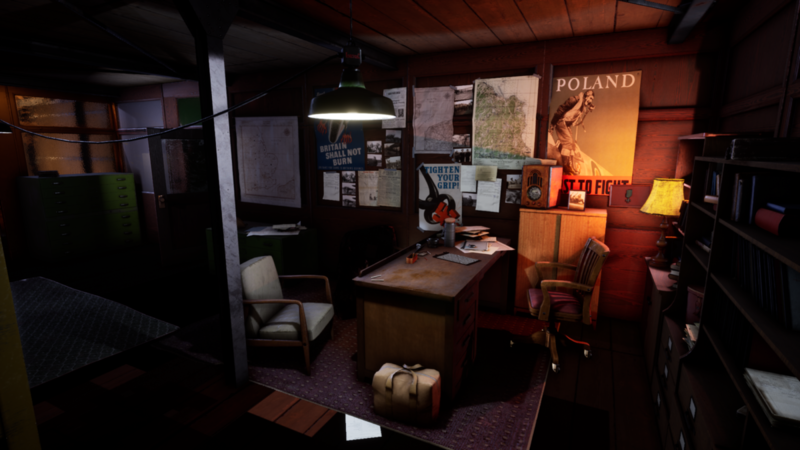The IPN President Karol Nawrocki, Ph.D., and Director of the New Technology Division, Magdalena Hajduk have launched the AVIATORS – WAR IN THE SKIES game at Warsaw Babice airport. Afterwards, they listened to a concert of the "Aviators - War in the Sky" soundtrack. At the event, Karol Nawrocki said:
"Our efforts to educate people on Polish history and bring back our heroes have really taken off. Wherever historical truth needs to be told, the IPN will be there."
DISCOVER THE HISTORY OF THE POLISH AIR FORCE DURING WORLD WAR II
“Aviators” is an educational adventure game in first-person mode, with a total length of gameplay estimated at 2-3 hours. The game contains arcade elements and logic puzzles. The plot is based on real events and characters of Polish airmen serving in the air during World War II. For the purposes of the game, the developer used some simplifications and added fictional situations and places, diversifying the entertainment. The game has implemented a Journal module, containing a compendium of historical knowledge to which the “Aviators” refer.
MEET THE LEGENDS OF POLISH AVIATION, TAKE PART IN AERIAL BATTLES
The game is divided into 6 missions, in which the protagonists are authentic characters:
Jan Zumbach, Stanisław Skalski, Anna Leska, Jadwiga Piłsudska, Leszek Owsiany, Lucjan Kretowicz, Witold Korwin-Łopuszański, Władysław Schöffer, Włodzimierz Bernhardt, Stefan Bohanes, Jan Lück, Grzegorz Denisienko.
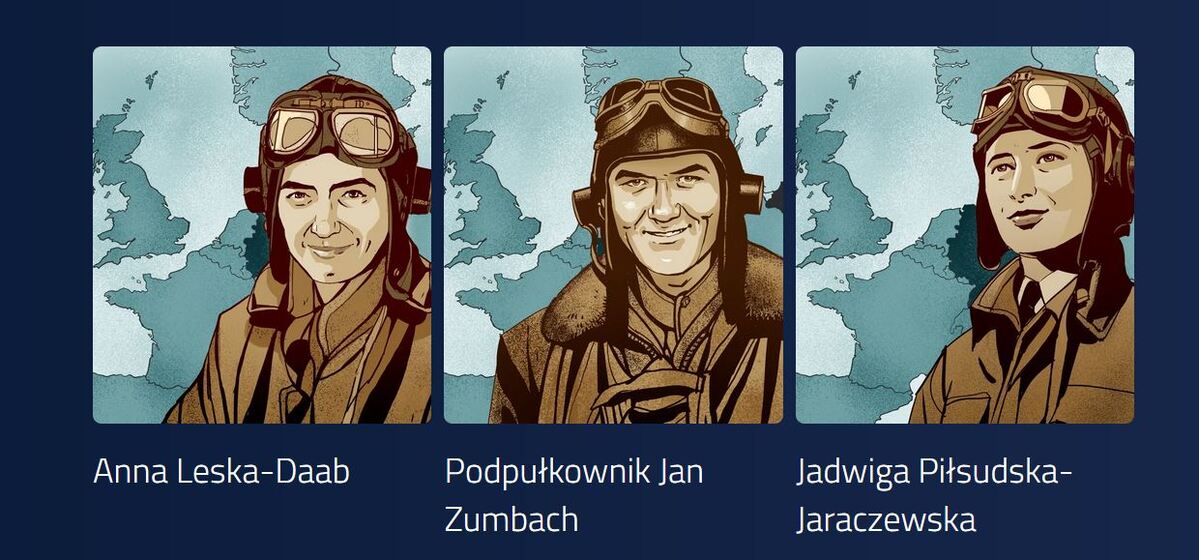
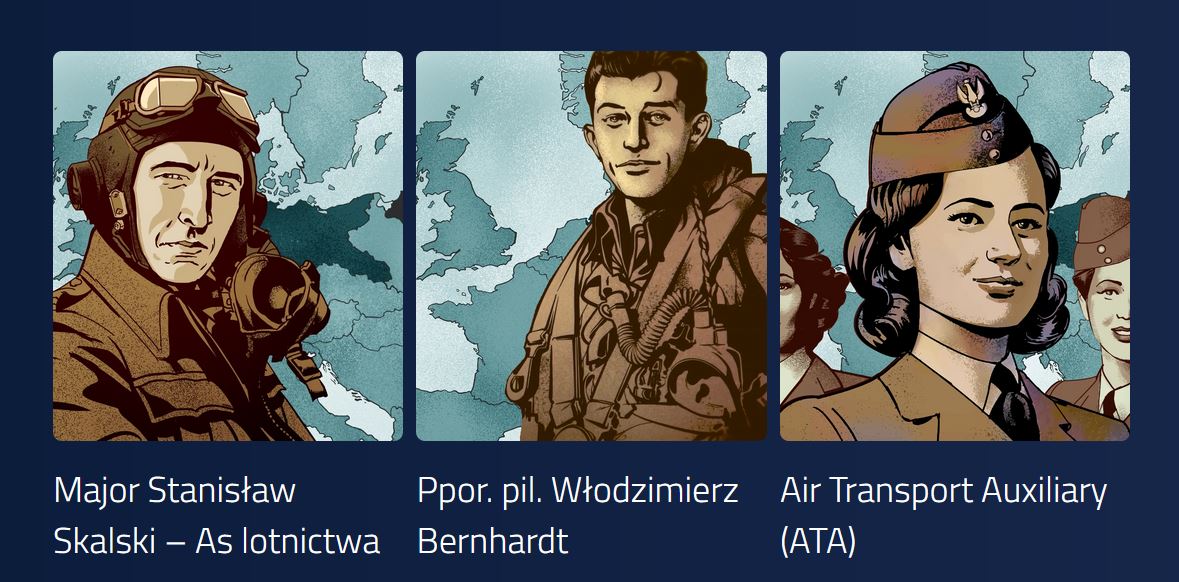
Anna Leska was interested in flying from a young age. At the age of 18, she obtained qualifications for categories A and B of gliders, as well as a license to control a balloon. In 1938, she began flying a two-seater RWD-8 training plane.
At the beginning of the defensive war in 1939, Anna was appointed a wartime second lieutenant and began serving in the Staff Squadron of the Air Command. On September 22, 1939, she escaped from a field airfield under fire by the Germans. She stayed briefly in Romania, then in France, and finally joined the pilots in Great Britain.
On January 1, 1941, she was the first Polish woman to become a member of the Air Transport Auxiliary (ATA), the British auxiliary service of the Royal Air Force. As an ATA pilot, from the first days of her service she was responsible for transporting aircraft from factories and delivering damaged machines to a repair or scrapping point. Missions in ATA were difficult due to significant restrictions. It was forbidden to, among other things: use the radio (radio communication was used only in combat aircraft), use maps (this was due to the fear of the plans being intercepted by the Third Reich) and perform aerial acrobatics (which reduced the risk of disaster).
Anna Leska was one of the few pilots who spent over 1,500 (where did this information come from?) hours in an airplane, which gave her the ability to operate all classes of aircraft, including four-engine bombers.
According to various sources, it transported about 700 planes, without a single accident! Anna Leska was awarded the British Golden Wings medal. In 1947, she married Mieczysław Daab, a pilot of the 301st Squadron.
Lieutenant Colonel Jan Zumbach
(born April 14, 1915 in Ursynów, died January 3, 1986 in Paris)
One of the best Polish pilots of World War II, an ace in the skies, an outstanding member of the fighter crew of the 303 Squadron. Tadeusz Kościuszko.
Jan Zumbach was born on April 15, 1915 in Ursynów. At the age of 7, he and his family moved to Bobrow, where his education began. His love for airplanes arose during the aviation shows held in Brodnica in 1928, which is when Jan decided to pursue a career as a pilot. As a 21-year-old man, he forged his mother’s consent and volunteered to join the army. After completing his service in the infantry in 1936, in the same year he started studying at the Aviation Cadet School in Dęblin, graduating in 1938 with the rank of second lieutenant. Before the outbreak of World War II, as a member of the crew of the 111th Fighter Squadron, he had a car accident and was sent to a rehabilitation center in Zaleszczyki. After the outbreak of World War II, Zumbach began searching for his squadron, but in vain. On September 17, 1939, he went to Romania, where he was not welcome and had to flee to Beirut and then to France. After safely reaching the destination, he was sent to the Polish Aviation Training Center. In May 1940, he was assigned to a Polish air unit called I Klucz Kominowy, subordinated to the French air forces. He didn’t have much success there. In the summer of 1940, he was evacuated on the ship “Kmicic” to Great Britain, where on August 2 he was incorporated into the 303 Squadron. Tadeusz Kościuszko, stationed in Norholt. Donald Duck’s first plane, as Zumbach was called by his friends, was the Hawker Hurricane Mk.I. Piloting this fighter during the Battle of Britain, John showed great courage, not without bravado. From August 1944 to January 30, 1945, he commanded the 133rd Polish Fighter Wing. It was confirmed that during World War II Jan Zumbach shot down 13 planes, with the number of shots probably reaching 18. In addition to the Silver Cross of the Order of Virtuti Militari, he was awarded the Cross of Valor four times, the Air Medal twice, the Pilot’s Field Sign and the British Distinguished Flying Cross twice.
Jadwiga Piłsudska-Jaraczewska
(born February 28, 1920, died November 16, 2014)
The daughter of Marshal Józef Piłsudski, called by him diminutive Jagódka. Already at the age of 12, she was interested in aviation, building model airplanes. She started her adventure with flying in 1937 with a glider course, obtaining categories A, B, C and D. By the outbreak of the war, she had flown 100 hours in gliders. Her first success was a 5-hour flight in a Delfin glider over 270 km, from Bezmiechowa to Łuków. She began her wartime wandering in Warsaw, where on September 1, 1939, she volunteered to help wounded civilians and then went to Great Britain via Vilnius, Riga and Stockholm. She repeatedly applied for admission to the civilian organization ATA (Air Transport Auxiliary) but was rejected due to her too young age. Ultimately, she was accepted into the Women’s Auxiliary Aviation Service, where she began her service on July 15, 1942. She gained her first pilot class at IFTS (Initial Flying Training School), training on light types of aircraft. After 100 hours of flying Magisters, Harts and Fairchilds, she went to AFTS (Advanced Flying Training School). On March 14, 1943, she obtained the 2nd class of ATA pilots, which gave her the opportunity to distribute Hurricane and Spitfire aircraft, and on September 17, she obtained the 3rd class and the privileges to fly twin-engine aircraft such as Avro Anson, De Havilland Dragon Rapide and Airspeed Oxford. After completing training courses, she drove a “flying taxi” at 1 Ferry Pool in White Waltham, where she transported ATA pilots around Royal Air Force bases. She was the one who supplied her beloved Spitfires to Polish units. On January 20, 1944, she left the service with the rank of second officer (equivalent to lieutenant). During its one-and-a-half-year service, it delivered 230 aircraft of 21 types: fighters, bombers and multi-role aircraft. In total, she flew 312 hours and 35 minutes. Recognized by the aviation staff as “an extremely promising pilot with above-average skills.” She was awarded the Bronze Cross of Merit with Swords and the Air Medal. In 1944 she married captain. Andrzej Jaraczewski’s Navy. She returned to Poland with her husband after regaining independence in 1990.
Major Stanisław Skalski – Aviation ace
(born November 27, 1915, died November 12, 2004)
He was a graduate of the Aviation Cadet School in Dęblin (Eagle School). He appeared for the competitive examination in January 1936, when there were 100 seats for 6,000 candidates. He completed fighter training at the Pilotage College in Grudziądz and in October 1938 became a second lieutenant in the 142nd Fighter Squadron of the 4th Aviation Regiment in Toruń.
On September 1, 1939, he took part in shooting down a German Henschel Hs 126 plane, and a day later he single-handedly shot down two Dornier Do 17s. During the following days, he won the title of aviation ace by shooting down three more enemy planes, including a Junkers Ju 87.
On September 17, after leaving the country, he decided to take an active part in the fight against the occupier as part of the formed Polish Armed Forces in the West. He came to Great Britain via France. On August 3, 1940, he was assigned to No. 302 Squadron and on August 30 to the 501st Fighter Squadron RAF (501 Squadron). On the same day, he shot down a Heinkel He 111 with a Hawker Hurricane and damaged another plane. On September 2, he had already shot down three Messerschmitt Bf 109s. During an air fight, on September 5, he was shot and had to save himself by parachuting from a burning plane. After a short recovery, he returned to flying. On March 1, he was assigned to 306 Squadron, where he received the rank of captain and the latest Spitfire model. He flew over Europe covering bombing expeditions. He then commanded Squadrons 316 and 317 to become an instructor in the 58th Operational Training Unit.
During the campaign in North Africa in early 1943, he was the commander of the Polish Fighting Team, named after him as the “Skalki Circus”. It was the best squadron fighting over North Africa.
From December 12, 1943, he commanded the 131st Fighter Wing with three squadrons under his command. In 1944, he was the commander of the 133rd Fighter Wing and fought during the Allied landings in Normandy.
Fellow pilots said he had bird instinct. The Germans called it “Flying Death” and the Americans called it “Hurricane Gloria”. He has 18 German planes shot down, 2 shot down as a team (classified as 11/12) and 2 probably and 4 and 1/3 damaged. He is deservedly the best Polish pilot of World War II.
After returning to Poland, he was arrested by the communist authorities in 1948, tortured and sentenced to death. The sentence was not carried out, he was rehabilitated in April 1956 and released from prison on April 11, 1956.
He was a lieutenant colonel in the Royal Air Force. Moreover, in 1988 he was appointed brigadier general of the Polish Army.
2nd Lieutenant Włodzimierz Bernhardt
(born May 30, 1915 in Warsaw, died September 29, 2013 in Warsaw)
Włodzimierz Bernhardt began his military career in the 21st Infantry Regiment, where he served during the defensive campaign in 1939. He took part, among others, in the battles of Mława, Kock and in the defense of Warsaw. His next stop was France, where he served in the 3rd Silesian Grenadier Regiment. It was only in England in mid-1942 that an Army cadet was allowed to complete an aircraft piloting course. After undergoing training as a Lancaster bomber, he joined the 300th bomber squadron “Ziemia Mazowiecka”.
The outbreak of the Warsaw Uprising resulted in Włodzimierz Bernhardt being conscripted into the 1586th Special Tasks Squadron on August 7, 1944. The squadron was responsible for delivering supplies to the insurgents. His first combat flight in the new squadron took place on the night of August 16-17, 1944, Włodzimierz served as a bombardier/drop officer. Despite constant control of the sky by German searchlights and fire from the Citadel by German heavy machine guns, the mission was successful. After the Halifax plane reached the appropriate position, Bernhardt decided to drop the containers over Warsaw. This involved a lot of responsibility and the need to pick the right moment. It worked, the supplies were delivered to Napoleon Square, and Vladimir, after completing his task, could go to rest. Unfortunately, on the way back from Warsaw, around 1:00 a.m., Halifax was shot at by a German Junkers Ju-88 fighter, forcing pilot Leszek Owsiany to make an emergency landing. After the order given by the commander, Włodzimierz handed the parachute to Leszek and then jumped out himself. Bruised, but without major injuries, he landed on a tree that cushioned the fall. The first thing Włodzimierz did after landing was to light a cigarette. At 2.00-3.00 a.m. Bernhardt encountered a civilian who took him to a nearby barn to spend the night in hiding and wait for the Home Army soldiers. After contacting a member of the Home Army, he joined the unit of 2nd Lt. Zdzisław Straszyński alias “Meteor”.
In November 1944, Bernhardt was sent to a camp in Kraków for downed British pilots and fugitives, where he posed as a Canadian who spoke French. After the liberation of Krakow on January 16, 1945, he decided to leave Poland. On February 28, together with a group of Allied prisoners, he went to Odessa, from where he got to England by ship.
Air Transport Auxiliary (ATA)
ATA (Air Transport Auxiliary) is a British paramilitary air unit under the authority of the RAF that operated during World War II. It was created in December 1939 to deliver mail and medical equipment. As the war conflict intensified, ATA pilots also began to transport planes from factories, set aside damaged machines for repair and transport technical support. ATA accepted pilots who could not join the RAF – including women, foreigners, elderly men or men with health impairment. The organization was often the source of jokes, and the acronym ATA was humorously changed to Ancient and Tattered Airmen or Always Terrified Airwomen.
Due to the large variety of aircraft (approximately 140 models) that were transported by ATA pilots, each crew member received a special notebook containing basic data and specifications of various types and models of aircraft. For better organization, a 6-level class system was introduced: I – single-engine aircraft, II – advanced single-engine aircraft, III – light with a double engine, IV – advanced with a double engine, V – four-engine aircraft, VI – flying boats.
Polish female pilots also belonged to ATA: Lt. Jadwiga Piłsudska-Jaraczewska, Capt. Stefania Wojtulanis-Karpińska alias “Barbara” and Capt. Anna Leska-Daab. Each of them had hundreds or even thousands of hours flown. As transport pilots, they constantly trained and acquired qualifications to be able to operate various types of aircraft, including fighters (Submarine Spitfire, Hawker Hurricane) and bombers (Handley Page Halifax, Boeing B-17 Flying Fortress). During World War II, over 1,250 pilots from over 25 countries spent approximately 415,000 hours. hours, transporting 309 thousand various types of aircraft. The transported planes were not equipped with guns, which made the pilots defenseless in the event of enemy fire. The ATA pilots could not use the radio, and the British weather was not kind to them.
FEEL THE MAGIC OF THE GAME’S SOUNDTRACK
“The Aviators’ Suite” is a complex series of compositions inspired by the genius of Karol Szymanowski and Mieczysław Karłowicz. Przemysław Treszczotka incorporates not only harmonic ideas and formal concepts into his original compositions but also directly includes quotes from the masterpieces of the mentioned composers.
